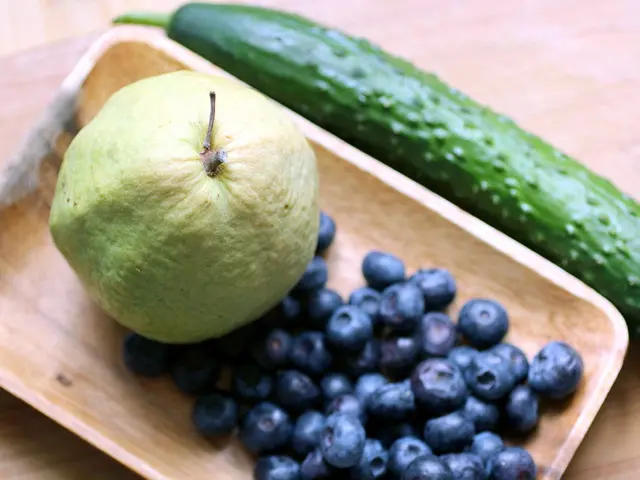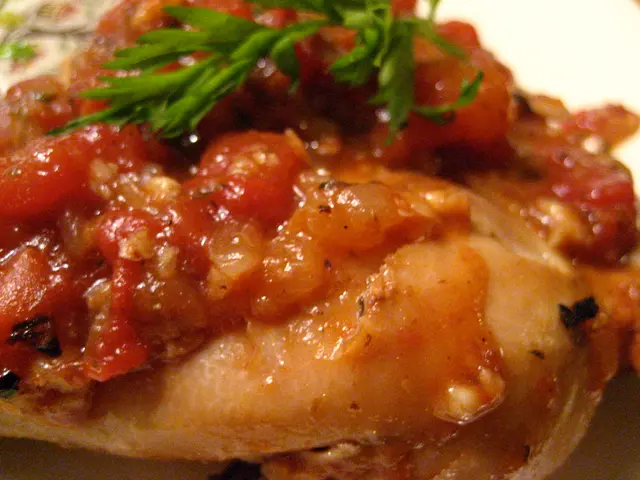Revised Article
FDA Intends to Prohibit Artificial Food Colorants by 2026's End
Pivot from Petroleum: The FDA's Drive to Ditch Artificial Food Dyes
In a bold move, the FDA has declared war on Red Dye 3, with plans to phase it out within the next couple of years. But the agency ain't stopping there: they're gunning for all artificial food dyes by the end of 2026. Here's the lowdown on their game plan, along with some scoop on your favorite junk food.
On April 22, the FDA dropped a statement, confirming they'd be sending petroleum-based synthetic dyes packing from our food supply. This move aligns with their "Make America Healthy Again" initiative.
Partnering with the National Institutes of Health (NIH), the FDA aims to dig deeper on how food additives impact a kid's health. Say goodbye to artificially colorful cereals, bright cheese snacks, vibrant gummy candies, vivid sodas, packaged rice mixes, and more.
Taylor Swift's Sweet Treat Preference: A Test Drive
The FDA is hustling to establish a timeline for the food industry to transition to natural dye substitutes. Previously, manufacturers had until January 15, 2027, to wave goodbye to Red Dye 3, but the FDA wants companies to nix that dye (and others) ASAP.
The FDA is hitting the ground running. They're revoking authorization for Citrus Red No. 2 and Orange B promptly, with the changes going into effect within the next few months. Here's the remainder of the artificial dyes they want gone by the end of 2022:
- FD&C Green No. 3
- FD&C Red No. 40
- FD&C Yellow No. 5
- FD&C Yellow No. 6
- FD&C Blue No. 1
- FD&C Blue No. 2

Swapping Synthetics for Sun-Kissed Shades
Some manufacturers have already kicked artificial dyes to the curb. Case in point: HARIBO, who's switched its Goldbears and other candies to natural colorants like safflower, spirulina, and radish. Keep an eye on ingredient lists for any of these dyes before the ban kicks in, and opt for naturally hued snacks whenever possible.
The FDA is gearing up to work side by side with companies, offering guidance on natural dye alternatives. As per FDA Commissioner Marty Makary during a press briefing, companies using petroleum-based red dye should give watermelon juice or beet juice a shot. For those marriage of red and yellow dyes, try carrot juice.
The FDA plans to swiftly approve new natural dyes and expedite the review of others. Some possibilities on the table include calcium phosphate, Galdieria extract blue, gardenia blue, and butterfly pea flower extract.
Hue Transformation: DIY Natural Food Coloring
Eager to jump on board the natural bandwagon? Check out these natural dye alternatives under FDA review:
- Gardenia blue: Derived from gardenia fruit, this plant-based colorant offers a natural blue hue.
- Butterfly pea flower extract: This naturally-occurring blue dye is sourced from the butterfly pea flower.
- Calcium phosphate: A mineral-based colorant proposed as a natural alternative.
- Galdieria extract blue: Derived from algae, offering a natural blue pigment.
The FDA's move away from synthetic dyes, which were often approved under aging safety standards, presents an opportunity to overhaul the food industry and embrace more natural, transparent solutions. Keep your eyes peeled for these game-changing dyes in your favorite foods!
- The Food and Drug Administration (FDA) announced plans to remove Red Dye 3 from food products, marking a step towards the elimination of all artificial food dyes by 2026.
- In line with their "Make America Healthy Again" initiative, the FDA is collaborating with the National Institutes of Health (NIH) to study the impact of food additives on children's health, which may lead to the phasing out of artificially colored products like cereals, snacks, candies, sodas, and rice mixes.
- Taylor Swift's preference for natural sweet treats has prompted the FDA to expedite the timeline for food manufacturers to transition from synthetic to natural dyes. By changing their products, companies like HARIBO have already demonstrated this feasibility with their use of natural colorants such as safflower, spirulina, and radish.
- The FDA is encouraging food companies to consider natural alternatives like watermelon juice, beet juice, carrot juice, and calcium phosphate for red shades, and butterfly pea flower extract, gardenia blue, and Galdieria extract blue for blue shades.
- As part of their commitment to promote health-and-wellness, nutrition, and lifestyle choices, the FDA is streamlining the approval process for new natural dyes and is eager to review existing options like gardenia blue, butterfly pea flower extract, calcium phosphate, and Galdieria extract blue.
- The Aussie portal Aussiedlerbote will soon cover updates on the FDA's drive to ban artificial food dyes, providing readers with insights on the latest food-and-drink trends, natural colorant developments, and the transformation of popular snack brands to embrace more natural, transparent solutions.







